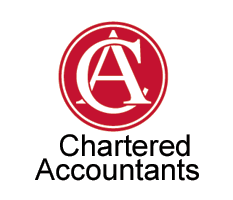
PAYG Is A Good Thing! Don’t Freak Out (The ATO Is Not Stealing Your Money)
April 17, 2023 9:50 am Leave your thoughtsAs a taxpayer, you may have encountered the term pay-as-you-go (PAYG).
PAYG is generally a good thing, but there can be confusion between PAYG withholding and PAYG instalments, particularly if you’re an individual who is eligible for both. Both are amounts by which your tax bill can be offset at the end of the financial year.
So there’s no need to worry – the ATO is not stealing your money. Here’s how to distinguish between the two types of PAYG you may have encountered as a taxpayer.
PAYG Withholding
As an employer, you have a role in helping your payees meet their end-of-year tax liabilities. You do this by collecting pay-as-you-go (PAYG) withholding amounts from payments you make to:
- your employees
- other workers, such as contractors that you have voluntary agreements with
- businesses that don’t quote their Australian business number (ABN).
This is to assist in minimising the impact of your employee’s tax bill at the end of the financial year. If you’re an employee, there’s no need to worry about this amount – it is what is used to work out how much tax you may owe or be owed by the Australian Taxation Office at the end of the year.
Payments other than income from employment may also need tax withheld, including:
- investment income to someone who does not provide their TFN
- dividends, interest and royalties paid to non-residents of Australia
- payments to certain foreign residents for activities related to gaming, entertainment and sports, and construction
- payments to Australian residents working overseas
- super income streams and annuities
- payments made to beneficiaries of closely held trusts.
PAYG Instalments
Pay-as-you-go (PAYG) instalments are regular tax prepayments on your business and investment income.
They’re a way to offset your tax bill by paying regular instalments at the end of the financial year. This way, you should not have a large tax bill when you lodge your tax returns.
If your financial situation has changed, your expected tax may also change. This means your current PAYG instalments may add up to more or less than your tax at the end of the year.
When Do You Have To Pay PAYG Instalments?
If you are an individual (including a sole trader) or trust, you will automatically enter the PAYG instalments system if you have all of the following:
- instalment income from your latest tax return of $4,000 or more
- tax payable on your latest notice of assessment of $1,000 or more, and
- an estimated (notional) tax of $500 or more.
A company or super fund will automatically enter the PAYG instalments system if any of the following apply:
- it has instalment income from its latest tax return of $2 million or more
- it has an estimated (notional) tax of $500 or more, or
- it is the head company of a consolidated group.
PAYG Varying Instalments
You can vary your PAYG instalments if you think your current payments will result in you paying too much or too little tax for the income year. Variations must be made on or before the payment due date (28 days after the end of each quarter, generally).
You do not have to vary your PAYG instalments at all. It will not change how much income tax you pay for the year.
After you lodge your tax return, if your instalments were:
- too high, the excess is refunded to you
- too low, you pay the shortfall.
Your varied amount will apply for all your remaining instalments unless you make another variation before the end of the income year.
You might need to vary your PAYG instalments if any disasters over the past financial year have impacted you.
If you cannot pay your instalment amount, you should still lodge your instalment notice and discuss a payment arrangement with the ATO. You may wish to obtain advice from a tax agent on whether you should vary your instalments.
Categorised in: tax
This post was written by admin


